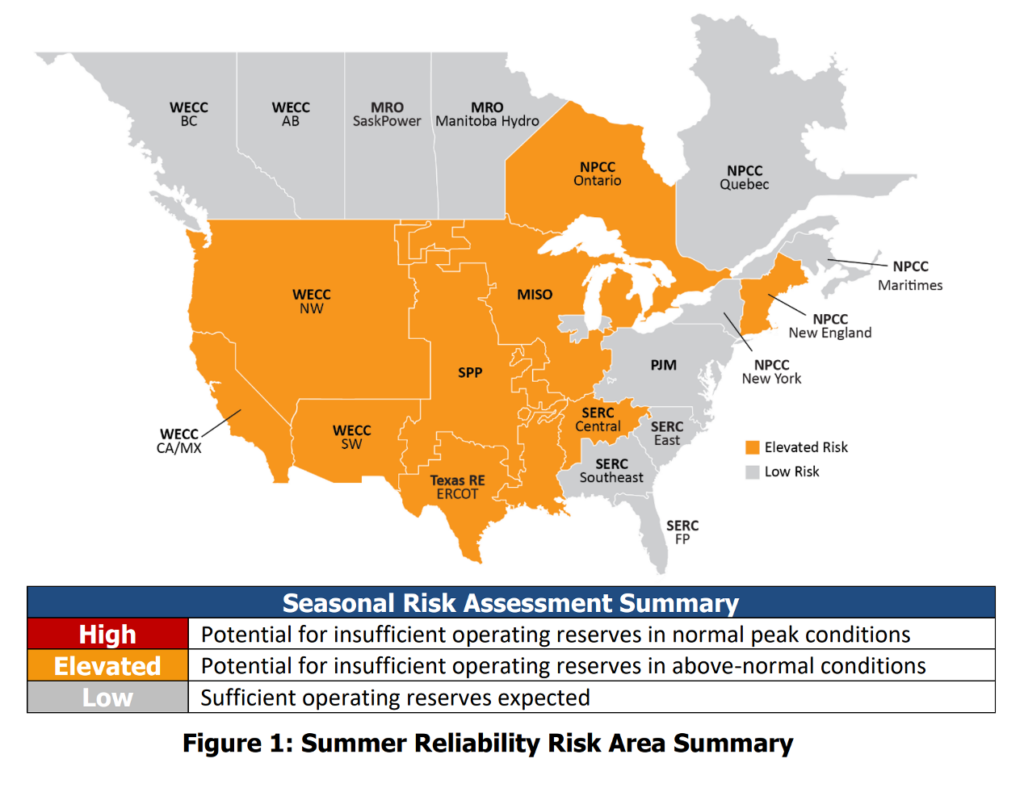The North American Electric Reliability Corporation’s (NERC) 2023 Summer Reliability Assessment says two-thirds of the country is at risk for electricity shortages this summer. NERC’s 2019 Summer Reliability Assessment identified only ERCOT (most of Texas) as being at elevated risk of capacity shortfalls. By comparison, this year’s list includes eight regions of the U.S., leading John Moura, NERC’s Reliability Assessment Director, to comment, “Going back at least five years, the reliability assessments have noted a steady deterioration in the risk profile of the grid.”

This is the first summer NERC has highlighted the impacts of environmental regulations, specifically the Ozone Transport Rule, as a reliability risk, but the report does not address the impacts of the Coal Combustion Residuals (CCR) rule. Also, the Southeast’s SERC Central region makes the elevated risk category for the first time. MISO’s assessment moved from a high risk of blackouts in 2022 to elevated risk this summer, largely thanks to lower electricity demand, increased firm imports of electricity from other regions, and over 3,000 MW of delayed coal retirements.
Generator retirements are a primary reason for NERC’s warnings, including nearly 14,000 MW of coal retirements last year alone. The loss of dispatchable resources like coal continues to outpace the addition of new capacity, including less reliable wind and solar. Environmental regulations, especially EPA’s proposed Carbon Rule, put as much as half the remaining coal fleet in jeopardy of earlier retirement and increase the risk of future electricity shortages.
Following the release of last year’s report NERC President and CEO Jim Robb had this to say, “Another important aspect that our summer assessment this year has kind of helped catalyze, is making sure that as the federal government pursues sound policies within a functional orientation, that the electric reliability consequences of policy direction will be considered along with the functional aspects.” Sound advice then and now.
